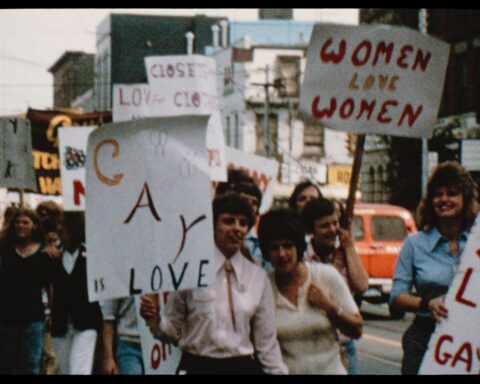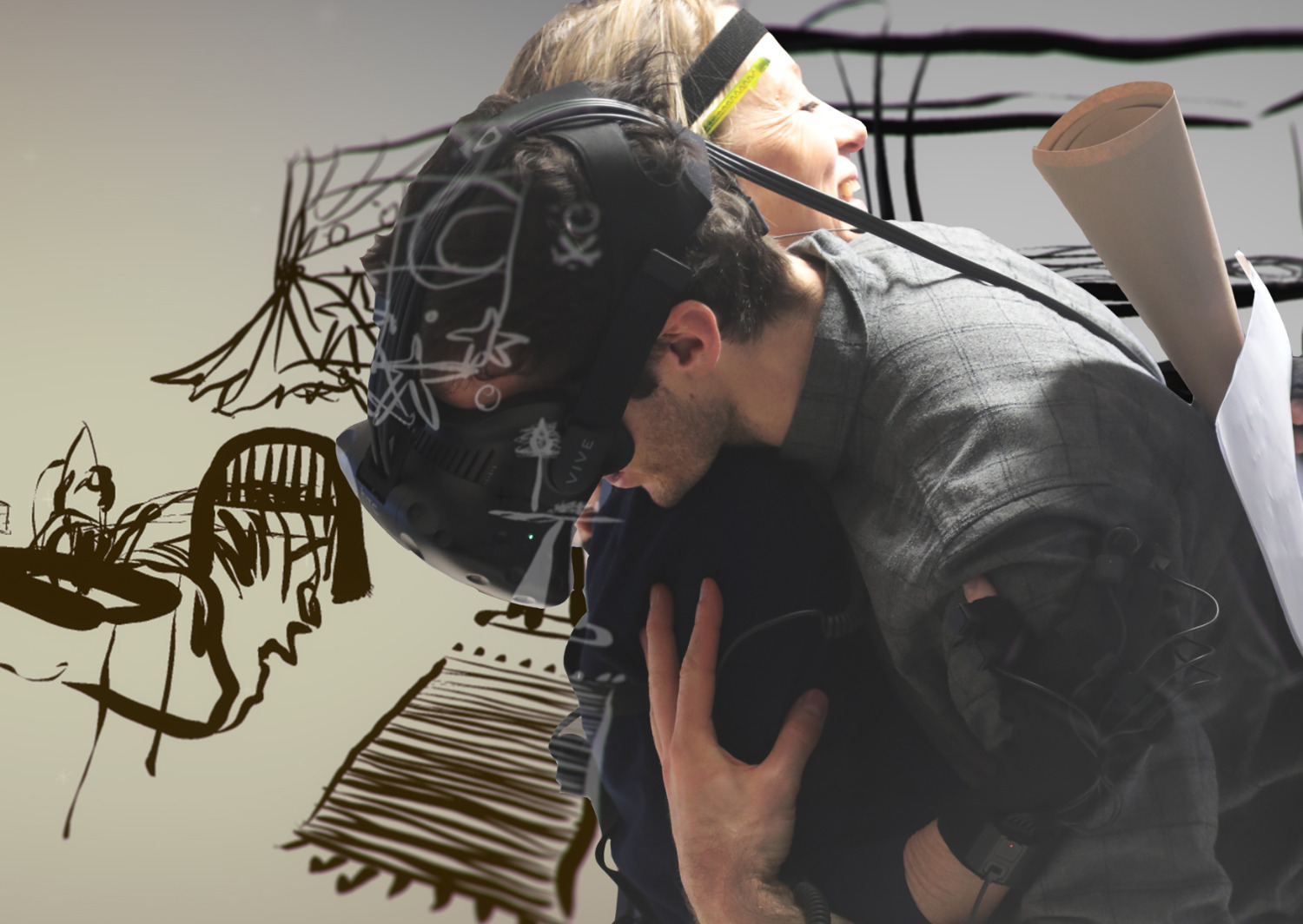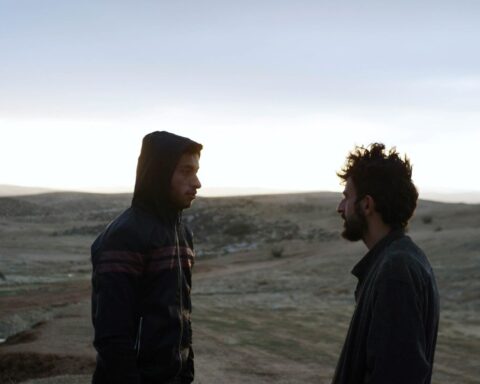Alberta’s identity is undoubtedly bound to resource extraction. Framed in the popular mind as the Texas of the North, the province’s relation to oil shapes its identity in countless ways. Films about nature and natural resources, unsurprisingly, dominate its documentary history. If the documentary is Canada’s native form of artistic expression, as Kevin McMahon suggests and this issue takes to heart, then perhaps the resource documentary—films that focus on the complexities of harvesting natural resources—is Alberta’s.
While there is an abundance of nature and resource documentaries in Alberta, one must pause to note its rich documentary history in other genres. There is an array of entertainment and socio-cultural documentaries—about, for example, the Calgary stampede (Calgary Stampede, 1948), hockey (The Boys Are Back, 1989) and wrestling (Hitman Hart: Wrestling with Shadows, 1998). 1984 saw a short historical documentary by Selwyn Jacob focusing on the all-black community of Amber Valley in northern Alberta, We Remember Amber Valley.
Nature and resource documentaries, however, dominate documentary production in and about Alberta. Alberta’s history and its geography help explain why: it is home to two National Parks, including the first of its kind, Banff, as well as to what Greenpeace and others call the biggest industrial project on the planet, the Athabasca oil sands. In “Visualizing Alberta: Duelling Documentaries and Bituminous Sands” from Found in Alberta: Environmental Themes for the Anthropocene, Geo Takach traces the tension between nature and industry through competing visual representations of Alberta—in government- and industry-backed images of the province as a pristine wilderness as well as “dissenting” documentaries that expose ecological devastation in the midst of its natural beauty. This tension plays an essential role in in shaping the Albertan cultural imaginary along with its documentary history: a reverence for the wilderness of Alberta on the one hand and its material destruction on the other.
Films that focus on the landscape and wilderness of Alberta were especially dominant in its early documentary history. 1899’s travelogue In the Canadian Rockies, Near Banff, for example, is comprised of shots of the sublime Rockies along with images of the Canadian Pacific Railway, conveying a frontier ideology that underpins the nation-building narratives of expansion and settlement in Canada and whose residues remain today.
The tradition of nature documentaries continued, emerging into a conventional genre. The now-controversial Academy Award-winning Disney documentary White Wilderness (1958), infamous for its mistreatment of lemmings, perpetuating the myth that lemmings compulsively commit mass suicide, was partially filmed in Alberta near Calgary. “Disney cameramen working on White Wilderness,” Margaret J. Kin writes in “The Audience in the Wilderness: The Disney Nature Films,” “were instructed not only to film the lemmings but, if necessary, to ‘throw them over the cliff by the bucketful’ to create the spectacle of thousands throwing themselves into the ocean to drown.” White Wilderness reveals that the line between reverence for nature and its intentional disregard is indeed a blurry one.
Alberta’s borders span Treaty 6, 7 and 8 lands, and a firm history of documentaries interrogates Alberta’s colonial past—and present. Chris Hsiung’s Elder in the Making (2015), for instance, follows two “city dwellers,” Hsiung, a Chinese-Canadian, and Cowboy Smithx, of Blackfoot descent, as they travel through Blackfoot territory, learning First Nations history from contemporary elders while meditating on the roles such wise people perform today. Relationships between colonisation and resource extraction are challenged in several important documentaries about Indigenous peoples’ experiences with—and against—the oil sands. Lawrence Carota’s Crude Sacrifice (2009) exposes the effects of tar sands on the Fort Chipewyan community through interviews with fishers, scientists, former oil sands engineers, community members, and more. Land of Oil and Water (2009) follows Warren Cariou on a journey through several Indigenous communities impacted by oil sands extraction throughout Alberta and Saskatchewan in a simultaneously personal and political film. Charting the impacts of oil extraction on Indigenous communities in Alberta, these films underscore the oppositional relationship between oil and water, between resource and nature.
Film – Petropolis – Aerial Perspectives on the Alberta Tar Sands (condensed) from Grimthorpe Film on Vimeo.
Early documentaries tended to highlight the vast, sublime and unique aspects of Alberta’s landscapes and wilderness, even if some of those aspects were entirely fictional. Recent documentaries, however, explore its vast destruction. Peter Mettler’s Greenpeace Canada-produced aerial documentary of the oil sands, Petropolis: Aerial Perspectives on the Alberta Tar Sands (2009), surveys affected landscapes while relaying facts regarding the scope and the intensity of its ecological damage. Petropolis provides a much-needed macroscopic perspective on the pervasive forms of “slow violence”—types of ecological violence that evade dominant sensational media representation—enacted through the extraction of bitumen from the Athabasca oil sands. A number of resource documentaries are designed to provide evidence for protests, tapping into a politics of awareness to challenge petro-capitalism in Alberta. Dirty Oil (2009) and H2Oil (2009) are representative examples of this kind of film; they expose the extreme levels of social and ecological devastation in the Athabasca oil sands region.
In their capacity for resistance, resource documentaries offer venues for the voices of activists. David York’s Wiebo’s War (2011) sympathises with Wiebo Ludwig’s struggle and eventual sabotage of oil and gas companies and mandated governmental institutions to protect his Christian community in Trickle Creek. Taking on Tarmageddon (2012) addresses activism by documenting the journey of several young U.K. activists as they travel to the heartlands of Alberta’s oil production. In the film’s second half, two young members of the Beaver Lake Cree Nation go to the U.K., spreading awareness of their struggle against the expansion of oil sands developments. While they no doubt illustrate the vast, pervasive social and ecological destruction occurring in Alberta, films like Taking on Tarmageddon reach a limit in their framing of petro-violence as out “there,” relegated to the landscapes and communities of the northern part of the province. Such films avoid confronting the complexities of Albertans’ collective resistance to, and complacency toward, a culture dominated by oil. Documentaries like On the Line (2011) depart from such distancing impulses, forcing viewers to confront the interconnected nature of oil sands developments. Interviewing potentially affected individuals along the way, the doc follows two friends down the path of Enbridge’s proposed Northern Gateway Pipeline, from Fort McMurray, Alberta to Hartley Bay, British Columbia, using self-propelled methods of travel including cycling, kayaking and hiking. On the Line makes visible the vast scope of the project while drawing attention to the individuals, communities and ecosystems that are under threat by the Northern Gateway Pipeline and other developments like it.
Alberta’s identity is complex, both in terms of how the province is seen and how it sees itself, as Geo Takach’s Will the Real Alberta Please Stand Up? (2009) demonstrates. The documentaries explored in this condensed history also expose this tension, but Alberta’s documentary history is one still being written. Evan Prosofsky’s experimental short Waterpark (2013), which takes West Edmonton Mall’s waterpark as its subject, offers a mesmerising, yet disorienting microcosmic map of alienation and desire in late capitalism. His upcoming documentary on Alberta will likely explore such mapping further. And the establishment of the Treaty 7 Filmmakers Collective in Calgary promises an enriching future of filmmaking in southern Alberta.
Alberta’s competing identities are reflected in the visual economies that comprise its documentary history, but they are also constituted by it. One hopes that there is an opportunity to move beyond the antinomies of reverence for and destruction of nature, to imagine another Alberta based on living with landscapes and ecosystems rather than against them.










